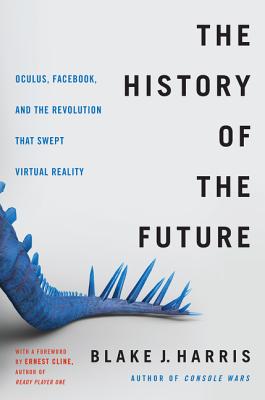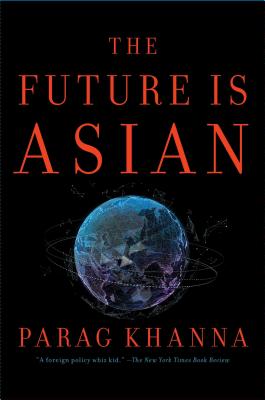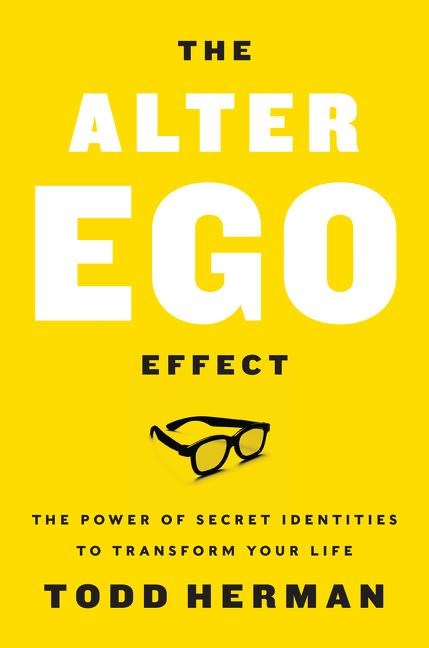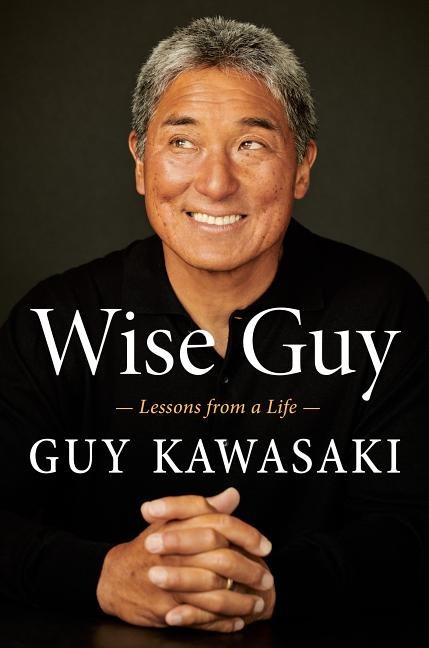Business Books to Watch in February
February 04, 2019
20 books we think our readers may be interested in giving some consideration in February.
By order of their release dates, these 20 books are some of the many coming out in February we think our readers may be interested in giving some consideration.
 The History of the Future: Oculus, Facebook, and the Revolution That Swept Virtual Reality by Blake J. Harris, Dey Street Books
The History of the Future: Oculus, Facebook, and the Revolution That Swept Virtual Reality by Blake J. Harris, Dey Street Books
From the author of Console Wars, the dramatic, larger-than-life true story behind the quest for virtual reality and the fight for the future.
Long regarded as a mix of science fiction and lore, virtual reality was finding obscure footing in enthusiastic web forums, science laboratories, and hushed military experiments. At the helm of this futuristic endeavor was an unlikely hero—young entrepreneur Palmer Luckey. With an intense interest in virtual reality and disappointment in the VR options that existed, Palmer went from a rebellious teenager living alone in a camper trailer, to the developer of impressive prototypes, to the founder of Oculus VR.
With the help of a videogame legend, a serial entrepreneur, and many other colorful characters, Luckey’s scrappy startup kickstarts a revolution and sets out to bring VR to the masses. As with most underdog stories, things didn’t quite go according to plan. The History of the Future is the unbelievable story of the ultimate entrepreneurial journey: a tale of battles won and lost, lessons learned and never-ending twists and turns—including an unlikely multi-billion-dollar acquisition by Facebook’s Mark Zuckerberg, which shakes up the landscape in Silicon Valley and gives Oculus the chance to forever change our reality.
Drawing on over a hundred interviews with the key players driving this revolution, The History of the Future weaves together a rich, cinematic narrative that captures the breakthroughs, breakdowns, and human drama of virtual reality.
 The Warrior Code: 11 Principles to Unleash the Badass Inside of You by Tee Marie Hanible, with Denene Millner, St. Martin's Press
The Warrior Code: 11 Principles to Unleash the Badass Inside of You by Tee Marie Hanible, with Denene Millner, St. Martin's Press
From American Grit co-star, former Marine Gunnery Sergeant Tee Marie Hanible, comes her story of how she became a warrior… and how you can do it too.
By the age of fifteen, Tee’s father had been murdered, she’d become a ward of the state, had mastered foster care, been expelled from school, and even found herself a victim of gun violence on the streets of the South Side of Chicago.
Having been introduced to military reform school, Tee began to see a different path for her life, a path that would lead her to become a Warrior.
From her relentless drive to be more than her circumstances, Tee found herself as part of one of the first female classes of recruits to complete the Marine Corps Crucible, as well as part of the first ever class of females to complete Marine Combat Training. As the only woman to deploy with her unit in Iraq in 2003, Tee is known as the badass female Gunnery Sergeant and trainer from FOX’s hit show American Grit. Now she’s here to help you unleash the badass inside of you!
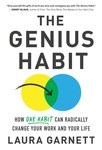 The Genius Habit: How One Habit Can Radically Change Your Work and Your Life by Laura Garnett, Sourcebooks
The Genius Habit: How One Habit Can Radically Change Your Work and Your Life by Laura Garnett, Sourcebooks
A remarkable new guide to finding your Zone of Genius, spending more time being fulfilled and engaged at work, and jump-starting the career of your dreams.
For young professionals and seasoned executives alike, The Genius Habit explores how a process of tracking thoughts and behavior can help you spend more time in your "Zone of Genius." Coined by consultant Laura Garnett, the Zone of Genius is that sweet spot in which you are challenged, fulfilled, and happily engaged in the work you're doing.
Both inspirational and practical, The Genius Habit introduces a methodology that has helped Laura's high-profile clients at LinkedIn, Capital One, and Verizon transform their careers and their lives. The Genius Habit gives employees—from entry-level assistants, to middle managers, to CEOs of major companies—the tools they need to gain clarity about who they are and where they are going, and to proactively create the career of their dreams.
 Digital Minimalism: Choosing a Focused Life in a Noisy World by Cal Newport, Portfolio
Digital Minimalism: Choosing a Focused Life in a Noisy World by Cal Newport, Portfolio
Minimalism is the art of knowing how much is just enough. Digital minimalism applies this idea to our personal technology. It’s the key to living a focused life in an increasingly noisy world.
In this timely and enlightening book, the bestselling author of Deep Work introduces a philosophy for technology use that has already improved countless lives.
Digital minimalists are all around us. They’re the calm, happy people who can hold long conversations without furtive glances at their phones. They can get lost in a good book, a woodworking project, or a leisurely morning run. They can have fun with friends and family without the obsessive urge to document the experience. They stay informed about the news of the day, but don’t feel overwhelmed by it. They don’t experience “fear of missing out” because they already know which activities provide them meaning and satisfaction.
Now, Newport gives us a name for this quiet movement, and makes a persuasive case for its urgency in our tech-saturated world. Common sense tips, like turning off notifications, or occasional rituals like observing a digital sabbath, don’t go far enough in helping us take back control of our technological lives, and attempts to unplug completely are complicated by the demands of family, friends, and work. What we need instead is a thoughtful method to decide what tools to use, for what purposes, and under what conditions.
Drawing on a diverse array of real-life examples, from Amish farmers to harried parents to Silicon Valley programmers, Newport identifies the common practices of digital minimalists and the ideas that underpin them. He shows how digital minimalists are rethinking their relationship to social media, rediscovering the pleasures of the offline world, and reconnecting with their inner selves through regular periods of solitude. He then shares strategies for integrating these practices into your life, starting with a thirty-day “digital declutter” process that has already helped thousands feel less overwhelmed and more in control.
Technology is intrinsically neither good nor bad. The key is using it to support your goals and values, rather than letting it use you. This book shows the way.
 The Future Is Asian: Commerce, Conflict, and Culture in the 21st Century by Parag Khanna, Simon & Schuster
The Future Is Asian: Commerce, Conflict, and Culture in the 21st Century by Parag Khanna, Simon & Schuster
In the 19th century, the world was Europeanized. In the 20th century, it was Americanized. Now, in the 21st century, the world is being Asianized.
The “Asian Century” is even bigger than you think. Far greater than just China, the new Asian system taking shape is a multi-civilizational order spanning Saudi Arabia to Japan, Russia to Australia, Turkey to Indonesia—linking five billion people through trade, finance, infrastructure, and diplomatic networks that together represent 40 percent of global GDP. China has taken a lead in building the new Silk Roads across Asia, but it will not lead it alone. Rather, Asia is rapidly returning to the centuries-old patterns of commerce, conflict, and cultural exchange that thrived long before European colonialism and American dominance. Asians will determine their own future—and as they collectively assert their interests around the world, they will determine ours, as well.
There is no more important region of the world for us to better understand than Asia—and thus we cannot afford to keep getting Asia so wrong. Asia’s complexity has led to common misdiagnoses: Western thinking on Asia conflates the entire region with China, predicts imminent World War III around every corner, and regularly forecasts debt-driven collapse for the region’s major economies. But, in reality, the region is experiencing a confident new wave of growth led by younger societies from India to the Philippines, nationalist leaders have put aside territorial disputes in favor of integration, and today’s infrastructure investments are the platform for the next generation of digital innovation.
If the nineteenth century featured the Europeanization of the world, and the twentieth century its Americanization, then the twenty-first century is the time of Asianization. From investment portfolios and trade wars to Hollywood movies and university admissions, no aspect of life is immune from Asianization. With America’s tech sector dependent on Asian talent and politicians praising Asia’s glittering cities and efficient governments, Asia is permanently in our nation’s consciousness. We know this will be the Asian century. Now we finally have an accurate picture of what it will look like.
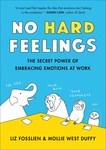 No Hard Feelings: The Secret Power of Embracing Emotions at Work by Liz Fosslien & Mollie West Duffy, Portfolio
No Hard Feelings: The Secret Power of Embracing Emotions at Work by Liz Fosslien & Mollie West Duffy, Portfolio
A hilarious guide to effectively expressing your emotions at the office, finding fulfillment, and defining work-life balance on your own terms.
How do you stop the office grouch from ruining your day? How do you enjoy a vacation without obsessing about the unanswered emails in your inbox? If you’re a boss, what should you do when your new, eager hire wants to follow you on Instagram?
The modern workplace can be an emotional minefield, filled with confusing power structures and unwritten rules. We’re expected to be authentic, but not too authentic. Professional, but not stiff. Friendly, but not an oversharer. Easier said than done!
As both organizational consultants and regular people, we know what it’s like to experience uncomfortable emotions at work—everything from mild jealousy and insecurity to panic and rage. Ignoring or suppressing what you feel hurts your health and productivity—but so does letting your emotions run wild.
Our goal in this book is to teach you how to figure out which emotions to toss, which to keep to yourself, and which to express in order to be both happier and more effective. We’ll share some surprising new strategies, such as:
Be selectively vulnerable: Be honest about how you feel, but don’t burden others with your deepest problems.
Remember that your feelings aren’t facts: What we say isn’t always what we mean. In times of conflict and miscommunication, try to talk about your emotions without getting emotional.
Be less passionate about your job: Taking a chill pill can actually make you healthier and more focused.
Drawing on what we’ve learned from behavioral economics, psychology, and our own experiences at countless organizations, we’ll show you how to bring your best self (and your whole self) to work every day.
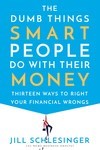 The Dumb Things Smart People Do with Their Money: Thirteen Ways to Right Your Financial Wrongs by Jill Schlesinger, Ballantine
The Dumb Things Smart People Do with Their Money: Thirteen Ways to Right Your Financial Wrongs by Jill Schlesinger, Ballantine
Why do even the smartest among us make dumb mistakes with our money?
Do you have a “friend” who is super smart, has a great career, holds a graduate degree, has even saved a chunk of money for retirement, but who keeps making the same dumb mistakes when it comes to money? Is this “friend” you?
After decades working as a Wall Street trader, investment adviser, and money expert for CBS, Jill Schlesinger reveals thirteen costly mistakes you’re probably making right now with your money without even knowing it. Drawing on heartfelt personal stories (yes, money experts screw up, too), Schlesinger argues that it’s not lack of smarts that causes even the brightest, most accomplished people among us to behave like financial dumb-asses, but simple emotional blind spots.
By breaking bad habits and following Jill’s pragmatic and accessible rules for managing your finances, you can save tens, even hundreds of thousands of dollars, not to mention avoid countless sleepless nights.
Practical, no-nonsense, and often counterintuitive, The Dumb Things Smart People Do with Their Money tells you what you really need to hear about retirement, college financing, insurance, real estate, and more. It might just be the smartest investment you make all year.
 Bedtime Stories for Managers: Farewell, Lofty Leadership… Welcome, Engaging Management by Henry Mintzberg, Berrett-Koehler
Bedtime Stories for Managers: Farewell, Lofty Leadership… Welcome, Engaging Management by Henry Mintzberg, Berrett-Koehler
In forty-two succinct, surprising essays, legendary scholar Henry Mintzberg brings management down from the clouds and onto solid ground.
If you’re like most managers and things keep you up at night, now you can turn to a book that’s designed especially for you! But you won’t find talking rabbits or princesses here. (There is a cow, but it doesn’t jump.) Henry Mintzberg has culled forty-two of the best posts from his widely read blog and turned them into a deceptively light, sneakily serious compendium of sometimes heretical reflections on management.
The moral here is this: managers need to leave their castles and find out what’s actually going on in their kingdoms. And like real bedtime stories, these essays have metaphors galore. So prepare to grow strategies like weeds and organize like a cow. Discover the maestro myth of managing, find the soft underbelly of hard data, and learn why downsizing is bloodletting and your board should be a bee. Mintzberg writes, “Just try not to be outraged by anything you read, because some of my most outrageous ideas turn out to be my best. They just take a while to become obvious.”
 The Alter Ego Effect: The Power of Secret Identities to Transform Your Life by Todd Herman, Harper Business
The Alter Ego Effect: The Power of Secret Identities to Transform Your Life by Todd Herman, Harper Business
A top performance expert reveals the secret behind many top athletes and executives: creating a heroic alter ego to activate when the chips are down.
There’s only one person in the way of you untapping your potential: You. There’s also one person who can move you out of the way so you can perform at your peak. That person is already inside you. You just need to unlock them.
This other part of you is your Alter Ego. After twenty-one years of working with elite athletes, performers and leaders, Todd Herman has discovered how you can use your alter ego to achieve the seemingly impossible. It all clicked for Todd when he met Bo Jackson.
When Herman met Bo Jackson, the professional athlete told him, “Bo Jackson never played a down of football in his entire life.” Bo explained that when he was young, he’d get into trouble because chaos caused by his anger issues. Then, he saw Friday the 13th and became fascinated by the cold, calculating nature of Jason Vorhees. In that moment, he resolved to stop being Bo Jackson, and start being Jason the moment he stepped on the field.
In this transformative guide, Herman teaches you how to create and control an Alter Ego like Bo—and the thousands of other athletes, business leaders, entrepreneurs, and entertainers who have used this simple tool to change their lives. Herman also shares his own story: he knew that inside was a confident, self-assured, intelligent person who could help others get better results in their lives. When he started using superman’s classic trick—putting on a pair of glasses—he learned to trigger the specific traits he needed to achieve his goals.
Building an Alter Ego is not about creating a false mask—it’s about finding the hero already inside you. It’s a proven way of overcoming the self-doubt, negativity, and insecurity that hold you back, and empowering you to ultimately become your best self.
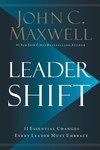 Leadershift: The 11 Essential Changes Every Leader Must Embrace by John C. Maxwell, HarperCollins Leadership
Leadershift: The 11 Essential Changes Every Leader Must Embrace by John C. Maxwell, HarperCollins Leadership
Internationally recognized leadership expert John C. Maxwell teaches readers how to shift their leadership to keep innovating, improving, and influencing others in today's fast-paced world.
Change is so rapid today that leaders must do much more than stay the course to be successful. If they aren't nimble and ready to adapt, they won't survive. The key is to learn how to leadershift.
In Leadershift, John C. Maxwell helps leaders gain the ability and willingness to make leadership changes that will positively enhance their organizational and personal growth. He does this by sharing the eleven shifts he made over the course of his long and successful leadership career. Each shift changed his trajectory and set him up for new and exciting achievements, ultimately strengthening and sustaining his leadership abilities and making him the admired leadership expert he is today.
Among those leadershifts are the Adaptive Shift from Plan A to Option A, the Production Shift from Ladder Climbing to Ladder Building, and the Influence Shift from Positional Authority to Moral Authority. Maxwell gives specific guidance to readers about how to make these shifts in their own lives. Each one requires them to change the way they think, act, and ultimately lead so they can be successful in a world that never remains the same.
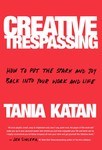 Creative Trespassing: How to Put the Spark and Joy Back into Your Work and Life by Tania Katan, Currency
Creative Trespassing: How to Put the Spark and Joy Back into Your Work and Life by Tania Katan, Currency
Creative disruptor, inspirational speaker, and co-creator of the internationally viral campaign #ItWasNeverADress shows you how to put the spark back into your work and life.
“You don’t have to turn into a corporate drone to kick ass in the working world,” says Tania Katan. After more than ten years of smuggling creativity into the business sector without getting busted, Katan is here to tell you that any task or pursuit can be a creative one. You just need to be willing to defy conformity and be ready to conjure imagination anywhere, at any time.
If you’re feeling stuck in a dullsville job, a windowless cubicle, or an ill-fitting polyester work shirt, chin up! Katan has been there, too, and she’s lived to tell the story. How? By choosing to stand out rather than fit in, to find her light, and to bask in it with all of her quirks and flaws. “The moment you choose to let the world see the real you—messy, imperfect, warts and all,” she says, “is the moment you choose to shine too.”
Whether you’re an entrepreneur seeking new ways to innovate, a newbie trying to spice up routine entry-level work, a free spirit with a rich creative life outside the office looking to bring more of that magic into your job, or just someone who occasionally feels the urge to scream “Why does it say paper jam when there is no paper jam?!!,” Katan will show you how to transform monotony into novelty and become more energized in your work and in the world.
Peppered with stories of her own shenanigans—from organizing a wrestling match in the middle of an art museum to staging a corporate culture intervention via post-its—and lessons from the rule-breaking exploits of artists, change-makers, and totally legit business leaders alike, this book is a rollicking, uninhibited guide to using creativity as fuel for a freer and more joyful life.
 Fully Human: 3 Steps to Grow Your Emotional Fitness in Work, Leadership, and Life by Susan Packard, TarcherPerigee
Fully Human: 3 Steps to Grow Your Emotional Fitness in Work, Leadership, and Life by Susan Packard, TarcherPerigee
HGTV cofounder Susan Packard launches the next chapter in emotional intelligence (EQ), and shows you how to increase your personal satisfaction and productivity—in work and life—via her three-step path toward EQ Fitness.
Emotions can sink us, or they can power us like fuel to succeed. Many of us show up for work, and life, feeling lonely even in a room full of people, or bringing unproductive emotions into work, like anger or fear. Susan Packard offers an accessible new guidebook to grow your emotional fitness, and it’s arrived just in time, as technology is quickly becoming our main interface for communication. Packard lays out how to develop supportive work relationships, and for leaders, how to build healthy company cultures. No matter where you are in your career, success is an inside job.
Packard introduces us to successful people and companies that are rich with “connector” emotions like hope, empathy, and trust-building. She tackles unconventional topics, like how workaholism keeps us emotionally adolescent, and how forgiveness belongs in the workplace, too. The best leaders balance power and grace, and everyone can effectively use resilience—an ability to endure tough situations and make tough decisions, and vulnerability, a willingness to open up, change, and admit when we need help.
Fully Human offers new tools to bring our strongest emotional selves to work each day.
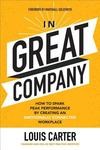 In Great Company: How to Spark Peak Performance By Creating an Emotionally Connected Workplace by Louis Carter, McGraw-Hill
In Great Company: How to Spark Peak Performance By Creating an Emotionally Connected Workplace by Louis Carter, McGraw-Hill
The manager’s solution to boosting business growth and team effectiveness? When employees are emotionally connected to the organization, personal performance skyrockets.
Employees who love their workplace are up to four times more likely to perform at a higher level than those who do not. In Great Company uses new research and proven practical solutions to give managers everything they need to create a lasting emotional connection to dramatically increase engagement and radically improve performance. The author provides a simple, scalable model built on five elements that create psychological safety and increase employee effort: Collaboration, Values Alignment, Respect, Positivity, and Achievement.
Readers will get all the tools they need to bridge the engagement divide and mobilize people to work together to grow the business.
 Brave New Work: Are You Ready to Reinvent Your Organization? by Aaron Dignan, Portfolio
Brave New Work: Are You Ready to Reinvent Your Organization? by Aaron Dignan, Portfolio
Aaron Dignan is the driver behind some of today’s most agile, fastest-scaling companies. In this book, he reveals his tested strategies for eliminating red tape, dissolving bureaucracy, and doing the best work of your life.
He’s found that nearly everyone, from Wall Street to Silicon Valley, points to the same frustrations: lack of trust, bottlenecks in decision making, siloed functions and teams, meeting and email overload, tiresome budgeting, short-term thinking, and more.
Is there any hope for a solution? Haven’t countless business gurus promised the answer, yet changed almost nothing about the way we work?
That’s because we fail to recognize that organizations aren’t machines to be predicted and controlled. They’re complex human systems full of potential waiting to be released.
Dignan says you can’t fix a team, department, or organization by tinkering around the edges. Over the years, he has helped his clients completely reinvent their operating systems—the fundamental principles and practices that shape their culture—with extraordinary success.
Imagine a bank that abandoned traditional budgeting, only to outperform its competition for decades. An appliance manufacturer that divided itself into 2,000 autonomous teams, resulting not in chaos but rapid growth. A healthcare provider with an HQ of just 50 people supporting over 14,000 people in the field—that is named the “best place to work” year after year.. And even a team that saved $3 million per year by cancelling one monthly meeting.
Their stories may sound improbable, but in Brave New Work you’ll learn exactly how they and other organizations are inventing a smarter, healthier, and more effective way to work. Not through top down mandates, but through a groundswell of autonomy, trust, and transparency.
Whether you lead a team of ten or ten thousand, improving your operating system is the single most powerful thing you can do. The only question is, are you ready?
 Unlocking the Customer Value Chain: How Decoupling Drives Consumer Disruption by Thales S. Teixeira, Currency
Unlocking the Customer Value Chain: How Decoupling Drives Consumer Disruption by Thales S. Teixeira, Currency
Based on six years of research, Harvard Business School professor Thales Teixeira shows how and why industries are disrupted, and what established companies can do to respond—as well as what potential startups must master if they hope to gain a competitive edge.
As it turns out, there is a pattern to disruption in an industry, whether the disruptor is Uber, Airbnb, or a dozen other startups that have shaken up incumbents and threatened the status quo.
For disruptors to pose a threat to an industry, they have to successfully break the link in choosing, purchasing, or consuming a product or service. Upstarts, Teixeira shows, do not attempt to compete with or overtake a reigning incumbent company entirely. Instead, they work to peel away a portion of the consumer decision-making process, the way Birchbox offered women a new way to sample new beauty products from a variety of cosmetics and fragrance companies, without having to go to the Revlon or Estee Lauder store. Zipcar doesn’t attempt to compete head to head with GM but rather to offer people who need transportation an alternative way to get around, without owning a car themselves, or being responsible for fuel, maintenance, or insurance.
In a penetrating narrative filled with case studies and stories, Teixeira shows us how startups successfully disrupt industries—and what industry leaders must do to avoid being disrupted.
 Chillpreneur: The New Rules for Creating Success, Freedom, and Abundance on Your Terms by Denise Duffield Thomas, Hay House
Chillpreneur: The New Rules for Creating Success, Freedom, and Abundance on Your Terms by Denise Duffield Thomas, Hay House
Feeling burned out by your business? Sick of the ’hustle and grind’ culture of your industry? There’s a better way! Get over your perfectionism and embrace the flow of the Chillpreneur.
Denise Duffield-Thomas, money mindset coach and best-selling author, will show you how with her trademark humor and down-to-earth wisdom. In this book, she shares invaluable business advice and counterintuitive millionaire mindset lessons (no blood, sweat, or tears necessary) which will set you on the path of abundance—without all the hard work.
You’ll discover how to find the business model that works perfectly for your personality, learn about key concepts—such as the Golden Goose and the Keyless Life—to help you work less and earn more, and become a marketing pro without feeling like a sleazy car salesman. Plus, Denise talks you through the smaller—but no less important—details of being an entrepreneur, including how to deal with awkward money situations and find the most effective ways to price your offers.
Full of reassuring and practical advice, Chillpreneur challenges the old, boring assumptions of what it takes to create success in business, so you can create financial independence with ease and grace.
 The Enlightened Capitalists: Cautionary Tales of Business Pioneers Who Tried to Do Well by Doing Good by James O'Toole, Harper Business
The Enlightened Capitalists: Cautionary Tales of Business Pioneers Who Tried to Do Well by Doing Good by James O'Toole, Harper Business
An expert on ethical leadership analyzes the complicated history of business people who tried to marry the pursuit of profits with virtuous organizational practices—from British industrialist Robert Owen to American retailer John Cash Penney and jeans maker Levi Strauss to such modern-day entrepreneurs Anita Roddick and Tom Chappell.
Today’s business leaders are increasingly pressured by citizens, consumers, and government officials to address urgent social and environmental issues. Although some corporate executives remain deaf to such calls, over the last two centuries, a handful of business leaders in America and Britain have attempted to create business organizations that were both profitable and socially responsible.
In The Enlightened Capitalists, James O’Toole tells the largely forgotten stories of men and women who adopted forward-thinking business practices designed to serve the needs of their employees, customers, communities, and the natural environment. They wanted to prove that executives didn’t have to make trade-offs between profit and virtue.
Combining a wealth of research and vivid storytelling, O’Toole brings life to historical figures like William Lever, the inventor of bar soap who created the most profitable company in Britain and used his money to greatly improve the lives of his workers and their families. Eventually, he lost control of the company to creditors who promptly terminated the enlightened practices he had initiated—the fate of many idealistic capitalists.
As a new generation attempts to address social problems through enlightened organizational leadership, O’Toole explores a major question being posed today in Britain and America: Are virtuous corporate practices compatible with shareholder capitalism?
 The Third Pillar: How Markets and the State Leave the Community Behind by Raghuram Rajan, Penguin Press
The Third Pillar: How Markets and the State Leave the Community Behind by Raghuram Rajan, Penguin Press
From one of the most important economic thinkers of our time, a brilliant and far-seeing analysis of the current populist backlash against globalization.
Raghuram Rajan, distinguished University of Chicago professor, former IMF chief economist, head of India’s central bank, and author of the 2010 FT-Goldman-Sachs Book of the Year Fault Lines, has an unparalleled vantage point onto the social and economic consequences of globalization and their ultimate effect on our politics. In The Third Pillar he offers up a magnificent big-picture framework for understanding how these three forces—the state, markets, and our communities—interact, why things begin to break down, and how we can find our way back to a more secure and stable plane.
The “third pillar” of the title is the community we live in. Economists all too often understand their field as the relationship between markets and the state, and they leave squishy social issues for other people. That’s not just myopic, Rajan argues; it’s dangerous. All economics is actually socioeconomics—all markets are embedded in a web of human relations, values and norms. As he shows, throughout history, technological phase shifts have ripped the market out of those old webs and led to violent backlashes, and to what we now call populism. Eventually, a new equilibrium is reached, but it can be ugly and messy, especially if done wrong.
Right now, we’re doing it wrong. As markets scale up, the state scales up with it, concentrating economic and political power in flourishing central hubs and leaving the periphery to decompose, figuratively and even literally. Instead, Rajan offers a way to rethink the relationship between the market and civil society and argues for a return to strengthening and empowering local communities as an antidote to growing despair and unrest. Rajan is not a doctrinaire conservative, so his ultimate argument that decision-making has to be devolved to the grass roots or our democracy will continue to wither, is sure to be provocative. But even setting aside its solutions, The Third Pillar is a masterpiece of explication, a book that will be a classic of its kind for its offering of a wise, authoritative and humane explanation of the forces that have wrought such a sea change in our lives.
 Wise Guy: Lessons from a Life by Guy Kawasaki, Portfolio
Wise Guy: Lessons from a Life by Guy Kawasaki, Portfolio
Silicon Valley icon and bestselling author Guy Kawasaki shares the unlikely stories of his life and the lessons we can draw from them.
Guy Kawasaki has been a fixture in the tech world since he was part of Apple’s original Macintosh team in the 1980s. He’s widely respected as a source of wisdom about entrepreneurship, venture capital, marketing, and business evangelism, which he’s shared in bestselling books such as The Art of the Start and Enchantment. But before all that, he was just a middle-class kid in Hawaii, a grandson of Japanese immigrants, who loved football and got a C+ in 9th grade English.
Wise Guy, his most personal book, is about his surprising journey. It’s not a traditional memoir but a series of vignettes. He toyed with calling it Miso Soup for the Soul, because these stories (like those in the Chicken Soup series) reflect a wide range of experiences that have enlightened and inspired him.
For instance, you’ll follow Guy as he…
- Gets his first real job in the jewelry business—which turned out to be surprisingly useful training for the tech world.
- Disparages one of Apple’s potential partners in front of that company’s CEO, at the sneaky instigation of Steve Jobs.
- Blows up his Apple career with a single sentence, after Jobs withholds a pre-release copy of the Think Different ad campaign: “That’s okay, Steve, I don’t trust you either.”
- Reevaluates his self-importance after being mistaken for Jackie Chan by four young women.
- Takes up surfing at age 62—which teaches him that you can discover a new passion at any age, but younger is easier!
Guy covers everything from moral values to business skills to parenting. As he writes, “I hope my stories help you live a more joyous, productive, and meaningful life. If Wise Guy succeeds at this, then that’s the best story of all.”
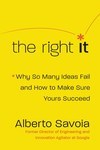 The Right It: Why So Many Ideas Fail and How to Make Sure Yours Succeed by Alberto Savoia, HarperOne
The Right It: Why So Many Ideas Fail and How to Make Sure Yours Succeed by Alberto Savoia, HarperOne
Google’s first engineering director and current Innovation Agitator Emeritus provides critical advice and tools for rethinking how we launch a new idea, product, or business, with insights to help successfully beat the law of market failure: that most new products will fail, even if competently executed.
Millions of people around the world are working to introduce new ideas, products, or businesses. Some will turn out to be stunning successes and have a major impact on our world and our culture: The next Google, the next Polio vaccine, the next Harry Potter, the next Red Cross, the next Ford Mustang. Others successes will be smaller and more personal, but no less meaningful: A restaurant that becomes a neighborhood favorite, a biography that tells an important story, a local nonprofit that cares for abandoned pets.
Simultaneously, other groups are working equally hard to develop new ideas that, when launched, will fail. Some will fail spectacularly and publicly: New Coke, the movie John Carter, the Ford Edsel. Others failures will be smaller and more private: A home-based business that never takes off, a children’s book that neither publishers nor children have any interest in, a charity for a cause too few people care about.
Most people believe that their venture will be successful. But the law of market failure tells us that up to 90% of most new products, services, businesses, and initiatives will fail soon after launch—regardless of how promising they sound, how much we commit to them, or how well we execute them. This is a hard fact to accept.
Combining detailed case studies with personal insight drawn from his time at Google, his experience as an entrepreneur and consultant, and his lectures at Stanford University and Google, Alberto Savoia offers an unparalleled approach to beating the beast that is market failure: “Make sure you are building The Right It before you build It right,” he advises. In The Right It, he provides lessons on creating your own hard data, a strategy for market engagement, and an introduction to the concept of a pretotype (not a prototype). Accessible and prescriptive, this essential guide delivers a proven formula for ensuring ideas, products, services, and businesses succeed.



